Pubs have long been hubs of social interaction, cultural exchange, and communal gatherings. Rooted in rich history and steeped in tradition, pub culture encompasses the unique atmosphere, customs, and characteristics that make these establishments more than just places to drink— they are vibrant spaces where stories unfold, connections are made, and memories are created. From the cozy corners of traditional taverns to the lively bars of modern cities, pub culture offers a distinct experience that sets it apart from other drinking establishments. Whether it’s the warm camaraderie of a neighborhood pub or the lively ambiance of a bustling bar, the essence of pub culture lies in its ability to foster a sense of belonging and provide a platform for celebrating life’s moments. This article delves into the characteristics that define pub culture, explores the differences between pubs and other drinking venues, and examines how the atmosphere plays a pivotal role in shaping the overall experience. By uncovering the traditions, history, and evolving nature of pub culture, we aim to shed light on why pubs remain timeless gathering spots around the globe.

Pub Culture
Pub culture in the UK is a vibrant and enduring tradition that goes beyond just drinking. Pubs, short for public houses, have long been at the heart of local communities, serving as social hubs where people gather to connect, celebrate, and relax. Rooted in centuries of history, pub culture reflects the values and traditions of British society.
History of Pubs
The concept of pubs dates back to ancient times, with alehouses and inns catering to travelers and locals alike. In the UK, pubs became popular during the 19th century, offering a space for people to socialize and escape the rigors of daily life. Today, pubs remain a cornerstone of local culture, often preserving historical architecture and storytelling.
Social Role of Pubs
Pubs are more than just places to drink; they are spaces where connections are made and memories are created. Whether catching up with friends or meeting new people, pubs foster a sense of belonging and community. They also play a role in local events, hosting everything from birthday parties to charity fundraisers.
Pub Food and Drink
While pubs are famous for their beers and ales, they also offer a variety of food options. Traditional pub grub includes classics like fish and chips, pies, and hearty stews, often paired with a pint of beer. Many pubs now feature modern menus, blending traditional dishes with contemporary flavors.
Entertainment and Activities
Pubs are lively spots for entertainment, often hosting live music, quiz nights, and sports screenings. They also serve as gathering points for watching major events like football matches or big boxing fights. The atmosphere in a pub is typically warm and welcoming, making it an ideal spot for casual gatherings.
Community Events
Pubs frequently host local events, bringing people together through festivals, markets, and seasonal celebrations. These events often showcase regional foods, crafts, and performances, further enriching the cultural experience associated with pubs.
Explore the rich history and vibrant culture of pubs through Dufferin Arms, a blog dedicated to celebrating the legacy and charm of these iconic establishments. Discover the unique stories behind pubs and their enduring appeal. Learn more .
Pub Culture vs. Bar Culture
Pub culture and bar culture are two distinct social phenomena that revolve around the consumption of alcohol, but they differ significantly in atmosphere, offerings, and target audience.
Pub Culture
Pubs are traditional establishments that often have a cozy, welcoming atmosphere. They are typically located in village or town centers and cater to a broad range of customers, from locals to visitors. Pubs commonly serve a variety of beers, wines, and sometimes spirits, along with traditional pub grub like burgers, fish and chips, and pies. The atmosphere is often lively, with regulars sharing stories and enjoying live music or sports events on TV.
- Atmosphere: Cozy, community-focused, with a local vibe.
- Offerings: Traditional beers, basic cocktails, and hearty pub meals.
- Clientele: Locals, families, and casual drinkers.
Bar Culture
Bar culture, on the other hand, tends to be more upscale and modern. These establishments often emphasize mixology, offering creative and high-quality cocktails made with premium spirits. Bars may feature trendy decor, skilled bartenders, and a focus on socializing with a more diverse crowd. Many bars host events like wine tastings, themed nights, or live entertainment.
- Atmosphere: Sophisticated, trendy, with a focus on socializing and entertainment.
- Offerings: A wide range of spirits, artisanal cocktails, and sometimes fine dining options.
- Clientele: Young professionals, tourists, and those seeking a sophisticated nightlife.
Differences
The primary differences lie in their focus and atmosphere. Pubs are more about community and tradition, while bars are centered on creating a memorable drinking experience through exceptional craftsmanship and ambiance.
Both cultures contribute to the rich tapestry of social life in many communities, offering something unique to everyone. Whether you’re looking for a casual drink with friends or a sophisticated night out, there’s a place for every preference.
Learn more about pub culture and its rich history at Dufferin Arms.

What Makes a Good Community Pub?
A good community pub is more than just a place to grab a drink; it’s a hub that fosters connection, provides comfort, and becomes a cherished spot for locals. Here’s what defines a standout community pub:
- Cozy Atmosphere: A welcoming ambiance with inviting decor, such as exposed brick walls, wooden beams, or a roaring fire, creates warmth. Proper lighting ensures visibility without being too harsh, allowing conversations to flow naturally.
- Well-Rounded Menu: Offers a diverse selection of dishes, including classic pub favorites like fish and chips or hearty roasts, often prepared with locally sourced ingredients. Vegetarian options and smaller plates cater to varied tastes, ensuring everyone feels accommodated.
- Friendly Service: Staff are approachable, efficient, and knowledgeable, making regulars feel like family and newcomers warmly welcomed. Excellent service enhances the overall experience.
- Drink Variety: Features a selection of beers, wines, and spirits, alongside soft drinks and non-alcoholic beverages to accommodate all preferences. Speciality cocktails and local brews add a unique flair.
- Community Engagement: Hosts events like live music, trivia nights, or sports viewings to bring people together. Collaboration with local businesses or charities strengthens ties within the community.
- Comfortable Facilities: Ample seating, well-designed tables, and a clean restroom ensure guests can relax and enjoy their time without concerns.
- Sense of Belonging: Regulars are recognized and valued, fostering a tight-knit atmosphere where everyone feels at home.
- Unique Appeal: Differentiates itself through quirky themes, signature dishes, or innovative events, setting it apart from competitors and encouraging repeat visits.
A truly great community pub isn’t just a place to socialize—it’s a reflection of the neighborhood it serves, offering comfort, camaraderie, and a sense of belonging.
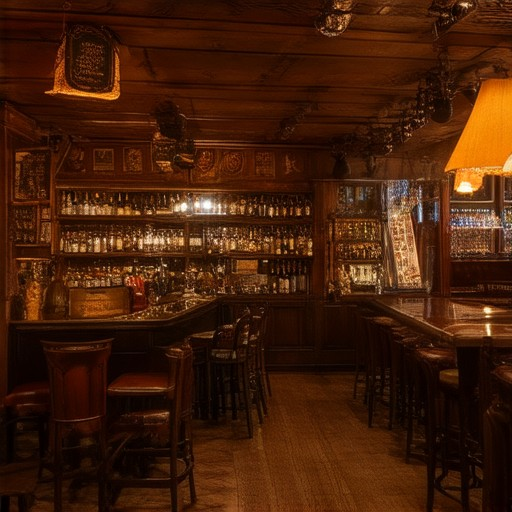
Pub Style
Pub style refers to the atmosphere, decor, and ambiance associated with traditional pubs, particularly those found in the United Kingdom. This style emphasizes a cozy, welcoming, and historically rich environment that reflects the cultural significance of pubs as social hubs.
Key Components of Pub Style
- Atmosphere: Pubs are known for their warm, inviting spaces with dim lighting, soft music, and a sense of camaraderie. The atmosphere often encourages social interaction and relaxation.
- Decor: Traditional pub style features elements like exposed brick walls, wooden beams, and heavy wooden furniture. Many pubs also incorporate vintage items, such as old photographs or memorabilia, to evoke a nostalgic feel.
- Drinks: Pub style is closely tied to the selection of beers, ales, and other beverages traditionally served in pubs. These drinks are often enjoyed in specific glassware or tankards, contributing to the overall experience.
- Food: Pub style extends to the menu, which typically includes hearty, comforting dishes like fish and chips, pies, and roasted meats. The food is often served in a casual, sharing-style manner to encourage socializing.
- Cultural Significance: Pubs are integral to local communities, often serving as gathering places for events, sports watchings, or simply catching up with neighbors. This communal aspect is a hallmark of pub style.
Pub style is not just a design aesthetic but also a lifestyle choice that emphasizes enjoying life in a relaxed, authentic setting. Whether it’s the classic British pub or a modern take on the concept, the essence remains the same: creating a space where people can connect, unwind, and savor the moment.
The Characteristics of a Pub
A pub is a traditional establishment that holds significant cultural and social value, often serving as a hub for community interaction. While the exact definition may vary, there are several key characteristics that define a pub:
-
Open to the Public :
Pubs are typically open to the general public, welcoming individuals of all ages, backgrounds, and walks of life. Unlike private clubs, entry does not usually require membership or residency. -
Serving Draught Beer or Cider :
One of the most iconic features of a pub is its selection of draught beers, ciders, and sometimes real ale. Many pubs pride themselves on offering a variety of beverages that are not necessarily tied to the sale of food. -
Indoor and Outdoor Areas :
Pubs commonly feature both indoor and outdoor seating areas. The indoor spaces are often designed for relaxation, socializing, and enjoying drinks, while outdoor areas may include gardens, patios, or terraces, perfect for al fresco dining or casual gatherings. -
No Requirement for Food Consumption :
Unlike many restaurants or bars, pubs do not mandate that customers purchase food alongside their drinks. Patrons can enjoy drinks alone, with friends, or in small groups without feeling pressured to order food.
These characteristics make pubs unique spaces where people can gather, unwind, and connect over shared experiences. Whether it’s catching up with old friends, enjoying live music, or simply soaking in the ambiance, pubs offer a versatile environment tailored to diverse needs and preferences.
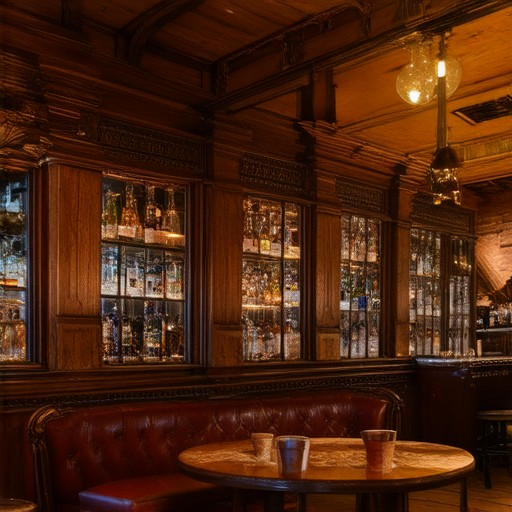
Proper Pub Attire: A Stylish Guide
When dressing for a night out at the pub, aim for a balance between comfort and style. Here’s a breakdown of what to wear:
- Men’s Attire: – Jeans: A classic choice, pair with a fitted button-up shirt or a casual sweater. – Chinos: Opt for a lighter color or pattern for a smarter look. – Shirts: Button-ups, Henleys, or graphic tees work well. – Footwear: Sneakers or leather boots for a versatile, stylish option. – Accessories: A scarf, hat, or watch can add a touch of elegance.
- Women’s Attire: – Dresses: Floral prints or pastel colors are perfect for a casual yet chic look. – Long Skirts: Pair with a blouse or t-shirt for a feminine and comfortable option. – Jumpsuits: A trendy one-piece that’s easy to throw on and looks polished. – Footwear: Ballet flats, ankle boots, or sneakers for a stylish yet relaxed vibe. – Accessories: A statement necklace or clutch bag can elevate your look.
Tips for Comfort and Style:
- Layering: Pack a lightweight jacket or cardigan for cooler evenings.
- Breathable Fabrics: Choose materials like cotton or linen for comfort.
- Weather-Appropriate Attire: Opt for sunscreen and a hat during sunny days.
Remember, the goal is to feel comfortable and confident while enjoying your time at the pub. Whether you prefer a more casual or slightly smarter look, there’s something for everyone!

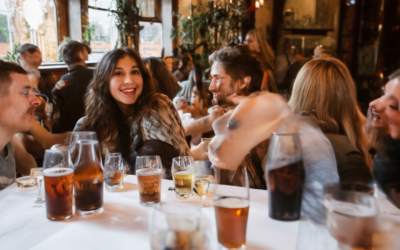
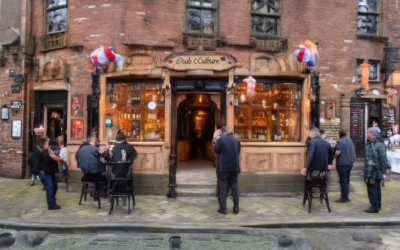
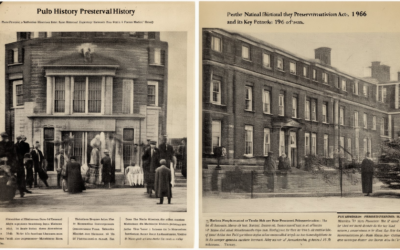
0 Comments